Digital Photo Tip: Use a Tripod for Stability
I love the freedom, flexibility, and creativity that comes from hand holding my camera, especially my pocket camera. There’s something liberating about being able to point it anywhere I choose and quickly change compositions, clicking off multiple variations in a short time span. Yet most of my photography is done with my camera firmly clamped onto my trusty tripod. Why?
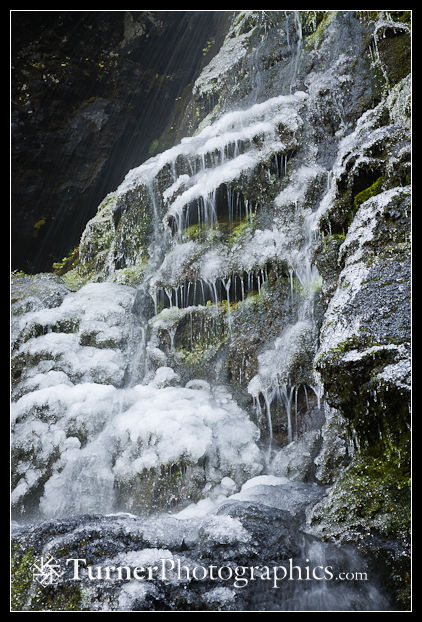
The first reason most people think about using a tripod is to hold the camera steady and avoid the blur that comes from trying to hand hold at too slow a shutter speed. That’s definitely a good reason to use a tripod, but it’s not the only one.
A tripod gives me creative choices. I can choose to use a slow shutter speed to blur a waterfall, an ocean wave, grasses blowing in the wind, moving people, traffic, or anything else that is moving.
This icy waterfall along the Kulshan Cabin Trail in the Mount Baker Wilderness would look very different with the higher shutter speed needed to handhold my camera. I think waterfalls look best with a shutter speed of 1/4 to 1/2 second. The exposure here was 1/5 second at f/11.
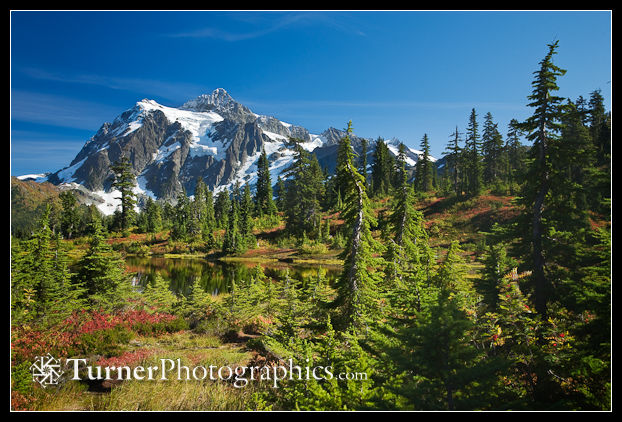
A tripod allows me to make bracketed exposures that I will later merge to an HDR (high dynamic range) photo to capture a brightness range greater than my camera will see by itself. With this photo of Mount Shuksan, I was able to hold detail both in the bright white glaciers and in the deep greens of the conifer foliage.
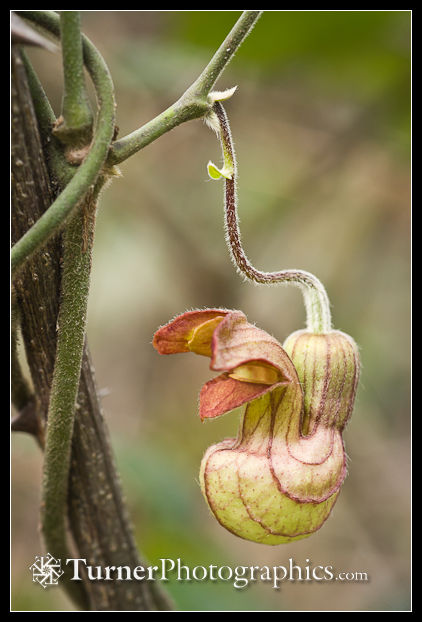 A tripod forces me to slow down and think critically about my composition. With the camera mounted securely I can carefully examine all four edges of the frame. I don’t want distracting elements anywhere that can take attention away from my main subject. It’s hard to look for those details when hand holding.
A tripod forces me to slow down and think critically about my composition. With the camera mounted securely I can carefully examine all four edges of the frame. I don’t want distracting elements anywhere that can take attention away from my main subject. It’s hard to look for those details when hand holding.
This very cool blossom on Aristolachia californica, California Pipevine, stands out because I was able to control my composition at trailside in Redding, California last March.
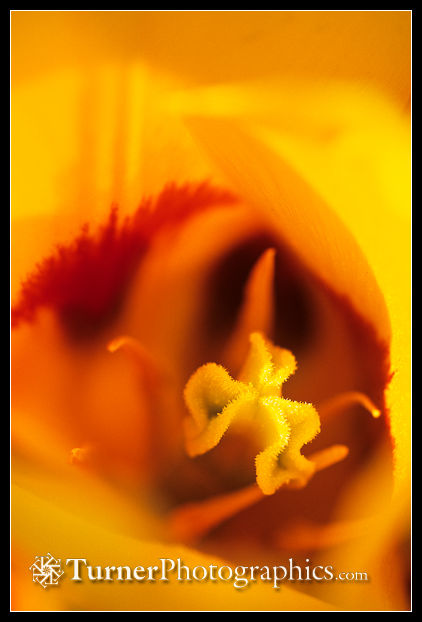 A tripod lets me focus critically on the part of my composition that I want to be tack sharp. The distance between my camera and subject doesn’t change when the camera is on a tripod (unless the wind is blowing and I’m photographing plants). I can choose my focus point and check depth of field. With my Canon 5D Mark II I can use live view and magnify the image on the back of the camera for critical focus.
A tripod lets me focus critically on the part of my composition that I want to be tack sharp. The distance between my camera and subject doesn’t change when the camera is on a tripod (unless the wind is blowing and I’m photographing plants). I can choose my focus point and check depth of field. With my Canon 5D Mark II I can use live view and magnify the image on the back of the camera for critical focus.
This tulip detail was photographed on slide film many years ago so there was no “live view” available. I used manual focus with my 100mm macro lens to concentrate attention on the pistil.
A tripod-mounted camera can be set to capture a series of images of the same scene over a period of time that can then be animated into a time-lapse sequence. I haven’t made any of these myself but have seen some fantastic examples on the web.
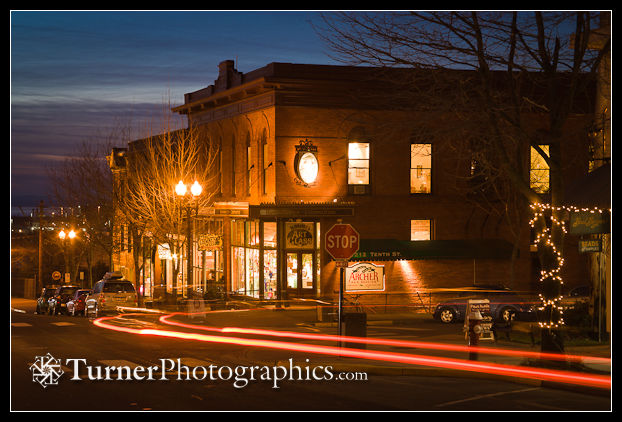
So you see, my tripod does much more than just hold my camera steady.
What do I use? I have two tripods that I use most of the time.
For my SLRs and other big cameras I have a Bogen Carbon One (Manfrotto 441) that I bought in 2000. That’s just the legs. I use an Arca Swiss B1 ballhead with a quick-release clamp. I like the ballhead because by loosening just one knob I can position the camera at any angle I want. Most nature and garden photographers prefer a ballhead.
Last year I bought a smaller tripod for my Canon G12. This lighter tripod is a Vanguard Espod Plus 203AB, which includes a small ballhead. I picked it up for under $100.
Both of my tripods have 3-section legs, which are stiffer and stronger than 4-section legs. The tradeoff is that they don’t collapse as short and may not fit your luggage when flying. They also both have flick-lock leg clamps, with levers that open to adjust the legs and close to lock them in place. The other system is twist locks. I think it’s a matter of personal preference which to get.
When you’re shopping for a tripod, remember that the heavier it is the more solid it will be. It will also be more work to cart around. Carbon fiber legs are stiff, strong, and lightweight but expensive. Aluminum legs are a lot cheaper and work just fine, but weigh more. You need a bigger tripod for long lenses.
One trick to make your tripod heavier when in use is to hang your camera bag (or another weight) from it. I keep a carabiner on the haul loop of my camera pack so I can quickly clip it to a ring on my tripod, instantly adding a lot of mass. I usually only hang my pack when I’m using my 70-200mm or 300mm lenses because I’ve found from experience that if I don’t, the movement of the SLR’s mirror can shake the camera and cause blurring.
Since one of the reasons to use a tripod is to avoid camera shake, you also want to use a cable or wireless remote release to trip your shutter. You can also use your camera’s self timer, but you can’t control the exact moment you release the shutter that way. For many images that’s not a problem. I use the 2-second timer on my G12 because I haven’t purchased the remote release for it yet. I use a wired cable release most of the time with my DSLRs, but also have a wireless remote.
If you’re not currently using a tripod, maybe this is the time to invest in one and start using it. I think you’ll see a big improvement in your photos.

